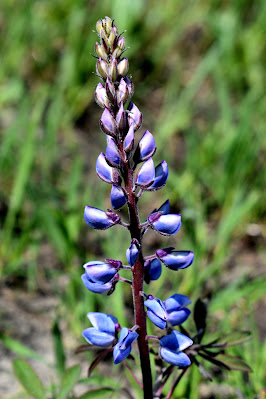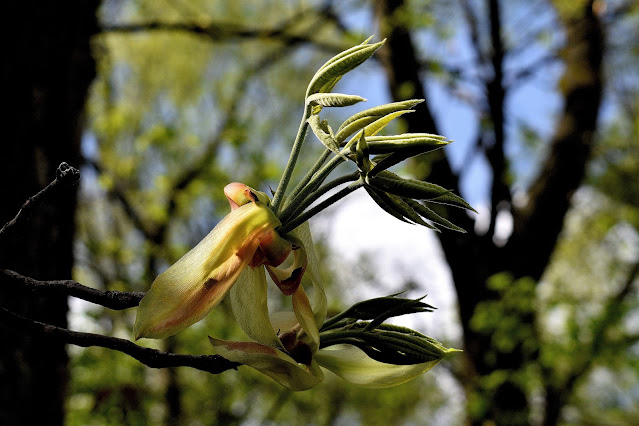 |
| Wood Betony |
I recently had the opportunity to visit Nachusa Grasslands,
located east of Dixon. This Nature Conservancy area has been on my bucket list
for quite some time. It was an amazing place to visit, with its beautifully restored
remnant prairies, along with a wetland and savanna, not to mention bison
grazing on the prairies. Normally at this time of year I am still snooping
around in the woodlands looking for spring ephemerals, but now I am also
starting to venture into the prairie to see some early bloomers. |
| Wild Lupine |
Many of the seed mixes we prescribe through our office for
the Conservation Reserve Program and found in other restored prairies contain
more common species and not many early blooming species. The mixes usually consist
of summer forbs and later summer grass species. Even though mixes are starting
to get more diverse—especially for the pollinator mixes—seeing the rarer early
bloomers is a special treat for me.It takes less than an hour to reach Nachusa from my house,
so I know I will be visiting again. Since I had not taken time to do much
research online before I left, I missed seeing many of the natural areas on
this more than 4,000 acre site. However, what I did see impressed me, with one
of the highlights, seeing six “new-to-me” wildflower species. I wandered around
the prairie at the Visitor Center, an open air display area, looking at the spring
species popping up in the recently burned acreage. Shooting Stars, Blue-eyed
Grass, Wild Lupine, Golden Alexander, Violet Wood Sorrel, Wood Betony,
Arrow-Leaved Violet, Kittentails, and Pussytoes were some beautiful and
interesting wildflowers in bloom. Because the area had been freshly burned,
these low to the ground forbs were easy to spot.
Once done with that portion, I turned to the north and ventured closer to where the bison were grazing and walking near the pond. Even from the distance I could watch them lumber around, graceful in their gait for such large bovines, and I could hear their sounds. Even though I have seen bison before in parks out west, it was a delight to see them in a natural setting in our Prairie State. |
| Violet Wood Sorrel |
 |
| Pussy Toes |
Once I’d seen some of the prairie, I ventured into the
savanna area. Even though I thought I knew what to expect, it was much more
than that. Having over a hundred acres to myself as I wandered along the trail
and jumping off trail for a few photo opportunities, I was mesmerized not only
by the plants I saw, but also by the plants I didn’t see. There were no maple
trees choking out the oaks and hickories and no garlic mustard plants choking
out the native wildflowers. It felt strange to see the same Shooting Stars I’d
seen in the open prairie growing in a more shaded and wooded area. It also felt
odd to see Mayapples, Wild Geraniums, and other woodland species growing in
full sun. I loved the overall peaceful atmosphere of the more open woodland.
 |
| Shooting Star |
I thought it was interesting to see a large culvert that
acted as a travel tunnel underneath the road for bison to use when crossing
from a north pasture to one to the south. I plan to revisit Nachusa to hike the
wetland loop near the savanna loop. There are also hundreds of other prairie
acres to explore to the north. Maybe they contain the same species I experienced
near the visitor center, but I’m guessing there are many more. Since there are
a total of more than 700 plant species on the Nachusa site, there is definitely
another adventure or two waiting to happen in my future. I encourage you to
visit this area to view plants and animals we don’t normally have a chance to
see in a natural setting that more closely resembles Illinois in the past,
before our rich prairie soils were converted to other uses. They don’t call
Illinois the Prairie State for nothing.
 |
| Shagbark Hickory |







No comments:
Post a Comment